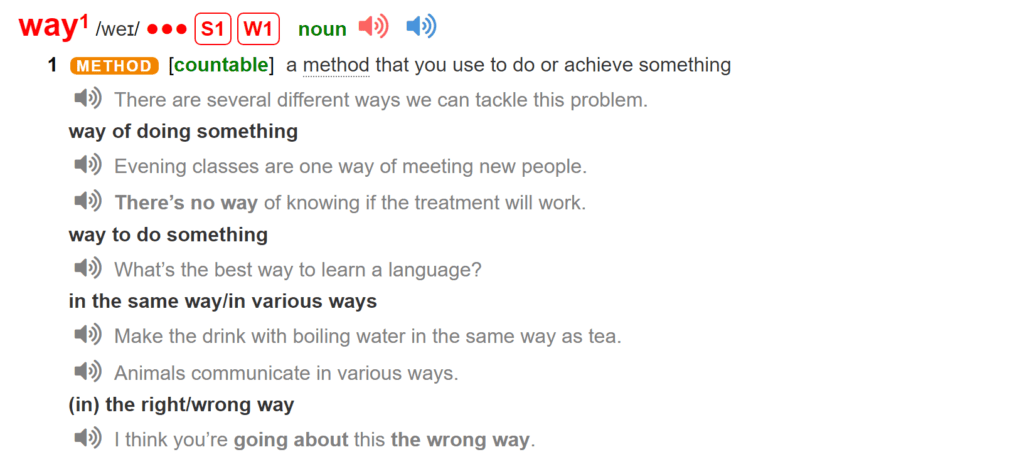Have you ever struggled to find the right words when you need them most? If so, you’re not alone. In my own journey to improve my English vocabulary, I discovered a proven strategy that can turn passive vocabulary into active. Want to know how? Keep reading!
A reader once shared her experience, saying, “It’s hard to find the right (not just simple but more complicated) words.”
So today I want to share a technique I used to bring my passive vocabulary from my head to my mouth and start using all those words in my speech.
The Power of PCA to improve active vocabulary
The simplest solution I can suggest is a routine I call PCA:
- pick up
- consult and copy
- activate
Daily Collocation Pickup
It takes less than 1 minute.
Every day, as you read a book, watch your favorite TV show, or simply scroll through Instagram posts, keep an eye out for that one phrase that strikes a chord.
The one you understand, but you’re not yet using.
Jot it down on a piece of paper or a page in your English notebook.
Next day, do the same.
You might be tempted to add unfamiliar words which you checked, or to add more phrases than one.
Don’t.
Just add one collocation to your collection.
By the end of the week – let’s say on Saturday – you’ll have 5-7 phrases.
Consult the dictionary and copy the example(s)
Once a week, you’ll need to set aside from 15 to 45 minutes.
Here’s what I did when I was trying to activate my English:
- I checked the examples for each of the 7 words in the Longman dictionary to see how it works. It’s one thing to translate the word. It’s often different to see how it actually works in context. Word-order might be different. You’ll notice the articles. Tenses. Those pesky prepositions.
- I would consult Longman dictionary and copy the example from the dictionary in my notebook in the second column.
- In the third column, I’d try to make a sentence about my life or someone I know.
Example:
Let’s say you scroll Instagram and see this quote:

You understand it just fine, but you realize you don’t use the phrase “the way you do it“, although you want to.
So you check it out in Longman:

Activate vocabulary = your life + your voice
Armed with examples from the dictionary, I’d copy them into my notebook.
In the 3rd column, I’d challenge myself to make up a sentence about my own life or about someone I know.

This way, you activate the word you want (and also the word “tackle”).
Now it’s time to put those sentences to work! Open Telegram or a voice recorder, and record voice messages by saying your sentences (just the 3rd column).
The goal? Let your words flow naturally.
Try not to read, but say the sentences from memory. Don’t hesitate to do it several times until you like how it sounded.
The secret juice to turn passive vocabulary into active: crafting mini-stories
There is one extra step I did that can multiply the effect. But you can skip it if you don’t have enough time.
After you are well aware of how each word is used in context, you try to make a mini-story with all of your 5-7 words.
It could be about a coworker’s adventure or a whimsical fairy tale. The choice is yours!
This step takes your learning up a notch, turning words into unforgettable parts of your vocabulary.
Conclusion
And there you have it! A simple, effective routine to activate your vocabulary.
This technique works, I promise.
You might not start using 100% of words you have in this notebook, but that’s because you need a context for them. But when you have that context, they will come to your mouth more easily.
So why wait? Give this technique a try, starting today. You can even pick up a collocation from this blog post to put into your collection 😉
Remember, it’s not about sounding fancy – it’s about expressing yourself with confidence. So, seize the opportunity, take a step forward, and watch your vocabulary flourish.
If you loved these tips, sign up for more language insights and strategies that’ll boost your English vocabulary.

